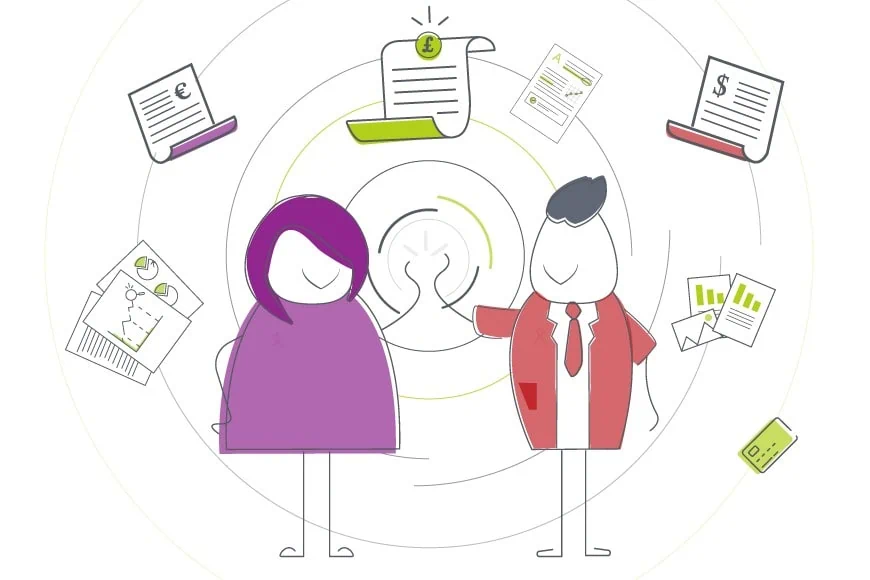How Sales Enablement Strategy Can Boost Customer Relations
20 Aug 2018
If you have anything to do with sales, chances are you’ve heard the term “sales enablement” surface in recent years. There’s also a pretty good chance that whether you know it or not, your organization has had a role like this for a long while now, but in the form of sales ops and marketing. If this is the case, what makes sales enablement different?
Sales enablement is more strategic, more hands-on. So much so, that a new role was developed to ensure sales success was getting the attention it needed.
But it’s a little more complex than that. So, let’s take a deeper dive into what sales enablement is and how it can help your business.
What is sales enablement?
If you do a quick Google search on sales enablement, you’d probably find something like this:
Sales enablement is the process of providing the sales organization with the technology, information, content, and tools that help salespeople sell more effectively.
Pretty straightforward, isn’t it? You’re enabling your sales team.
Sales enablement is pretty much an evolution of sales ops and marketing. It’s a more proactive approach to ensuring the sales team has what it needs at all times to make sure customers are taken care of at every point in their journey.
When you think about it, this will mean something a little different for every organization. Every company has its own specific needs when it comes to maintaining satisfied customers. The good news is that regardless of what these needs are, if you’re rolling out a sales enablement strategy effectively, you’ll create a better buying experience for your customers.
Using sales enablement strategies effectively
You’ve worked hard to build and maintain your customer base, so the last thing you want is a high customer churn rate.
One thing that makes churn rate go up: inconsistency.
One thing that can reduce it: sales enablement.
With that being said, if you want to avoid customer churn, the foundation of your sales enablement efforts should be focused on creating the best customer experience possible. In order to successfully do this, you’ll need to focus solely on the customer: what they want, what they need, and how you can give that to them.
Considering this, here are some steps to help you launch a successful sales enablement program:
1. Make sure your sales team has a good understanding of who your customersare and what journey they’re on. If your sales team can identify and understand customer experience gaps, you’ll be able to focus your sales enablement efforts in these areas. This will close those gaps along the customer’s journey, ultimately leading to a better customer experience.
2. Define specific objectives for your sales enablement program. The overall goal of sales enablement is to help the sales team sell more effectively. You give your team the tools to do this, but it’s what the individuals on the team do with those tools and how they do it that will make or break your sales enablement efforts. This can be easily overlooked. Just because you give them the tools they need, doesn’t mean they know how to use them. Be sure to focus on the what and how with your sales team. This will help it to understand what objectives you’re trying to accomplish with the program.
3. Develop set processes for your sales team. If inconsistency increases customer churn rate, then that must mean consistency improves it. Makes sense, right? Right. So, the more consistent your processes are, the better. Make sure your sales team is using the same content, language, and messaging you’re providing it with. Keeping brand consistent across the board will ensure that customers are being sold on the same product and that they have a good understanding of what they’re buying, rather getting a different pitch from person to person.
4. Make sure your sales team is actually using the tools you’re providing it with. You could give your team the best tools in the world, but if those individuals are not actually using them to enhance the customer experience, your sales enablement program will flop immediately. Enforce the use of the resources and track what’s being used and what’s not. This will allow you to optimize future sales enablement efforts.
Creating long-term customer relationships
Everyone knows that customer relationships play a huge part in the success of your business.
So, then it’s really no surprise that a good customer experience should lead to a loyal, long-term customer relationship.
Now, I’m not saying this is always the case, but if you put in the effort to creating the ultimate customer experience, nine times out of 10 the customer will want to keep their relationship with you. A great customer relationship will turn that customer into a brand advocate, which in turn can convert into an online review. And with 92% of B2B buyers being more likely to make a purchase after reading a trusted review, positive customer relationships are everything.
So, how do you get there? How do you create these long-term relationships and keep them? It all starts with understanding what your customer needs and how you can provide them with that value. If you can give your sales team the tools to deliver that value and teach them how to use those tools effectively, your sales enablement program will undoubtedly create solid customer relationships that will last in the long run.

Jordan is a content specialist for G2 Crowd’s Learn hub, a B2B software review site with over 450,000 user-verified reviews.